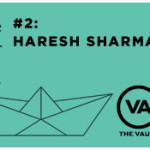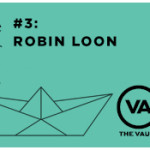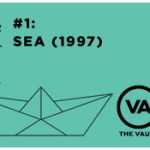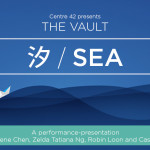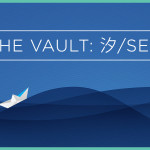Sea was written and staged in the 1990s, an exciting decade for the local theatre scene. Singapore plays were being written and produced by local professional theatre companies. The government found value in the arts for the future of Singapore and aggressively pursued its development. But the growth was also accompanied by growing pains as the state logged heads with artists and their supporters.
Here are 4 things to note about the Singapore theatre in the 1990s, based on the commentary of practitioners, experts and industry observers.
- 1. Growth in Local Theatre
- 2. Cultural Development Policies
- 3. The State and Artists
- 4. The Esplanade and The Substation
-
The 1990s was a time of growth and experimentation in Singapore theatre. Homegrown theatre companies like The Necessary Stage and TheatreWorks were focused on creating local dramatic texts as well as staging them. These were plays that were written by Singaporeans, focusing on issues and topics that mattered to Singaporeans.
The proliferation of local theatrical works was mainly led by young, English-educated artists, who, because of increasing international exposure and training overseas, were more open to experimenting with less conventional theatremaking methodologies.
By the mid-1990s, original, intracultural, indigenous, and social theatre began to move into the margins, while plays that were influenced by postmodern traits and tendencies gained prominence… Broadly speaking, avant-garde and postmodern forms of theatre belong to the same category: both refer to theatre ahead of its time. Such theatre pieces challenge traditional theatre precepts in many different ways. They give much more importance and attention to interpretation and performance than to the written text on which performance is based. They position the audience – and not the playwright or director – as the ‘author’ or meaning-maker. They are opposed to giving the literary author, playwright, or director of a theatre piece the controlling perspective for an audience to discover; instead, the audience’s perspective is just as, if not more, important. Inevitably, avant-garde and postmodern forms of theatre are opposed quite profoundly to authoritarianism.Source: Theatres and Cultures: Globalizing strategies by Alvin Tan. In Renaissance Singapore? Economy, Culture, and Politics, edited by Kenneth Paul Tan (p.185-6).
The three companies [The Theatre Practice, The Necessary Stage, and TheatreWorks] created adventurous productions, often formally bold (many of the plays were “devised,” with the scripts created in a workshop setting) and dealing with issues of memory, ethnicity, and other identity issues. These were artistic reactions against the singular and sometimes strident top-down disciplinary modernization of Singapore since the 1960s, which had allowed little space for reflection on cultural or historical issues. What was notable about the theatre of the late 1980s and mid-1990s was that “difficult” theatre – even if text based – formed the mainstream of the more important theatre groups; devised theatre coexisted within companies with fledgling, indigenized Broadway-style musicals. Gender issues were noticeable by the early 1990s. All in all, these were invigorating years.
Source: Creating High Culture in the Globalized “Cultural Desert” of Singapore by CJ.W.-L. Wee. In The Drama Review, 47(4), p.85.…by the early 1990s, the local theatre community had matured significantly to produce numerous landmark plays, thus making it possible to speak of a recognizable local cultural production. Crucially, this community was led largely by young English-educated Singaporeans who were constantly pushing boundaries of censorship and was supported by the broadening Singapore middle class who now possessed the disposal income to consume leisure activities and desire to reflect on home-made stories and narratives.
Source: The Theatre and the State in Singapore: Orthodoxy and Resistance by Terence Chong.^Back to top
-
The 1990s was when the Singapore government, for the first time, pursued the development of the arts in its policymaking. In lieu of the 1985 economic recession, the government was looking for other avenues to sustain growth and development. This led to the 1989 Report of the Advisory Council on Culture and the Arts (ACCA), chaired by the then 2nd Deputy Prime Minister Ong Teng Cheong.
Recommendations from the report steered the cultural-policy direction of the 1990s, which included outcomes such as the establishment of the National Arts Council (NAC) in 1991, a surge in public funding for the arts, the construction of the Esplanade, and the introduction of arts education in schools.
In 1992, the government began to promote a policy to make the city-state not just a Global City, but, indeed, a Global City for the Arts. Unfortunately, if predictably, an overall instrumentalist attitude predominated. Some leading politicos had discovered that to become a “serious” Global City capable of attracting and retaining the “foreign talent” of senior business executives who could further “globalize” the city-state, we needed Western metropolitan-style cultural infra- and superstructures that would enable Singapore to become a sort of “London of the East.”
As is often the case in Singapore, an it-needs-to-happen-tomorrow social engineering imperative and paradigm were adopted for the new cultural policy. The entrenched position of this paradigm gave rise to the central tension between the professed wish for a dynamic creativity and the existing instrumentalizing and rationalist mental set. Arts funding increased and theatre, as the most visible art form of the 1980s, was a major beneficiary. The pretentiously entitled Renaissance City Report: Culture and the Arts in Renaissance Singapore (2000) advocated for even more funding to be made available (some S$50 million—nearly U.S.$30 million—over five years), and these funds have started to have an impact on the cultural scene. Source: Creating High Culture in the Globalized “Cultural Desert” of Singapore by CJ.W.-L. Wee. In The Drama Review, 47(4), p.87.
With the setting up of MITA [Ministry of Information and the Arts] in November 1990, followed by the creation of the National Arts Council (NAC) in 1991, the government, for the first time, entered the cultural arena in a big and systematic way. The council’s impact can be seen from the dramatic increase in the total amount of grants awarded to the arts group and artists, from $1.02 million in 1991 to $7.5 million in 2000… At the end of the decade, MITA’s landmark Renaissance City Report would provide an additional $50 million in arts funding over the next five years. It would also serve as a statement of cultural policy, building on the 1989 Report of the Advisory Council on Culture and the Arts which said that the arts would: “(a) enrich us as persons; (b) enhance our quality of life; (c) help us in nation building; and (d) contribute to the tourist and entertainment sectors”. Source: Theatre Life!: A History of English-language Theatre in Singapore through The Straits Times by Clarissa Oon, pp. 138-140.
^Back to top
-
There was a tense relationship between the state and artists at the time. This was not a new situation by any means, but the key difference in the 1990s was that the government had stepped in to become a key driver behind the local arts scene, albeit chiefly with economic intentions rather than artistic ones. At the same time, practitioners were experimenting and pushing the boundaries of theatre and art, all in the search for a Singapore theatre.
The combination made for anxious times in the local theatre scene, with government officials and theatre practitioners never quite knowing if a work was crossing the proverbial line. Artists were also bothered by the heavy-handedness of the State when it came to cultural development and regulation.
The situation calmed down thereafter, until another government crackdown in late 1993—this time specifically on the arts. A 21-year-old performance and visual artist, Josef Ng, who did a performance protesting the police entrapment of working-class homosexual men, and TNS, which practiced Augusto Boal-style Forum Theatre, were accused, respectively, of obscenity and having a “Marxist” orientation. The latter charge, with the collapse of the Berlin Wall, could only sound absurd. Performance art remains officially in a position of limbo, and cannot receive National Arts Council funding (NAC). Despite these obstacles, the state’s desire for a commodified theatre and visual arts scene has persisted. Source: Creating High Culture in the Globalized “Cultural Desert” of Singapore by CJ.W.-L. Wee. In The Drama Review, 47(4), p.87.
However, while [NAC’s] role was to help the arts to grow, it was also to see that artists were not out of step with the moral majority; a Drama Review Committee comprising academics, community leaders and the like was formed by the council in 1993 to advise on the licensing of potentially controversial plays. Source: Theatre Life!: A History of English-language Theatre in Singapore through The Straits Times by Clarissa Oon, pp. 138-140.
^Back to top
-
Part of the government’s plans to turn Singapore into a “global city of the arts” was the development of arts infrastructure. At the top of the to-do list was the construction of a dedicated “world-class” performing arts centre. Boasting a concert hall and a theatre that can seat thousands, the design for the Esplanade – Theatre on the Bay was first unveiled to the public in 1994. Ground broke in 1998 and construction was completed in 2001 at a cost of S$600 million.
The development of the Esplanade perturbed some local arts practitioners and commentators, who believed a multi-million dollar performing arts centre, designed for large, big-budget productions, would not be a conducive space for nurturing local art.
Critics of the Esplanade pitted it against smaller “alternative” arts spaces, perhaps best epitomised by The Substation. Established in 1990 from a disused power station, The Substation emerged from late theatre doyen Kuo Pao Kun’s vision for a space for artists to experiment and grow. The Substation houses multiple studio, gallery and performance spaces, including a 120-seat theatre and a garden courtyard for outdoor performances.
The crowning infrastructural achievement was the October 2002 opening of the S$600 million (U.S.$345 million) “Esplanade—Theatres on the Bay” arts complex, built specifically for “world-class” foreign acts—a statist attempt to create a commercial Cult of the Beautiful. It remains to be seen how this will affect theatre development, given that the Esplanade has no medium-size theatre space: its major theatre auditorium seats some 1,800 persons—a number that both the older and newer theatre companies would find daunting to fill.Source: Creating High Culture in the Globalized “Cultural Desert” of Singapore by CJ.W.-L. Wee. In The Drama Review, 47(4), p.87.
And it is precisely because art has always been about power that we are going to build for ourselves an Arts Centre. It is not an accident that the state’s involvement in the arts has taken the form of a commitment to build a monument to art. For it is not as though the state here is imposing a particular model on art; the state can do so because art – a kind of art – has always made itself available to such appropriations…
The moment The Substation leaves The Substation for the Singapore Arts Centre [former name of the Esplanade], all that The Substation represents will die – not literally, but symbolically. This is inevitable. For the Singapore Arts Centre is designed as a monument. By definition, monuments commemorate the dead. And there is a kind of reciprocal structure at work here: when you stand before a monument, you not only commemorate the dead, you are struck dumb, silenced. Monuments are designed to work that way – they can’t help it. They are designed to speak on your behalf; and in doing so, they require your symbolic death. That is the general effect of the relationship between the state and art in which both are complicitous.Source: Is art necessary? by Janadas Devan. In Art vs Art: Conflict & Convergence (1995).The various attempts to make Singapore a regional hub for the arts have been further enhanced by a huge injection of funds by the state to the tune of S$1 billion to develop new and upgrade old cultural facilities. In particular, a new Singapore Arts Centre (SAC, named the Esplanade – Theatres on the Bay) is being constructed by 2001, with a complex of four theatres, a concert hall and studios…
Why do practitioners hold this negative view of state initiatives which ostensibly will serve the arts well? As David [pseudonym] (playwright) articulates, it is because with such heavy financial investment in the Esplanade, there is a need to “go for surefire successes” which will cover the cost of renting the spaces and eventually recovering the investment…
Given the clear signals from the state, practitioners and critics have sought to negotiate their preferred socio-cultural agendas within the constraints of the state’s economic agenda in a number of ways. First, and probably the most effective strategy, is the deliberate but difficult process of developing “alternative arts spaces” in Singapore. Chief among these is the Substation, an arts centre established in 1990…Source: Cultural policy in Singapore: Negotiating economic and social-cultural agendas by Lily Kong. In Geoforums, Vol. 31(4).In the first five years of The Substation’s history, under the visionary artistic direction of founder Kuo Pao Kun, The Substation was a pioneer arts space in Singapore. It played a key part in almost every arts event or development of significance. The Substation’s founding coincided with a burst of activity in Singapore such as the emergence of professional theatre companies, new writing in theatre, and a new generation of visual artists inspired by new practices and ideas promoted by artists and groups such as the Artists Village. Experimentation, across all the art forms, was the order of the day. These artists found a congenial home in The Substation which encouraged them to experiment, to try, and most importantly, to fail – and to continue.Source: The history of The Substation by Audrey Wong, http://www.substation.org/about-us/history/
^Back to top
By Daniel Teo
Published on 20 November 2015
The Vault: 汐/Sea revisits Haresh Sharma’s Sea and refreshes it with a Chinese translation and memories of the 1997 production. Performed by Serene Chen and Zelda Tatiana Ng, in collaboration with Robin Loon and Casey Lim, on 23 November 2015, 8pm at Centre 42 Black Box. Admission is free. Find out more here.
 


